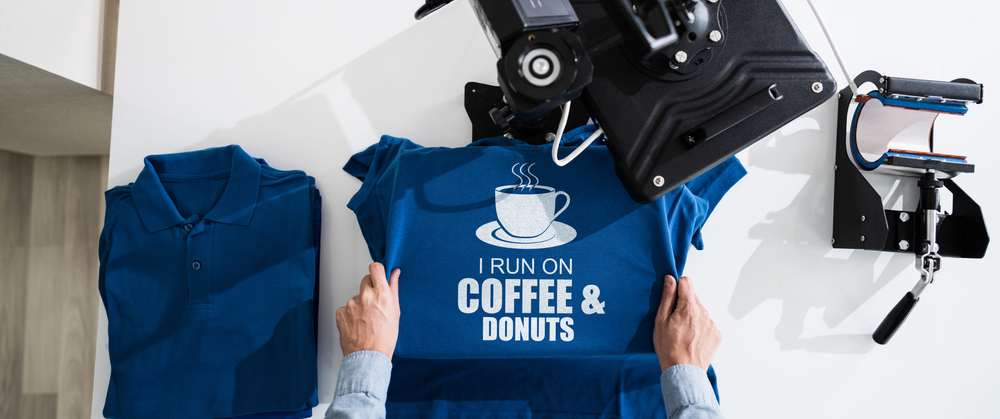Creating custom shirts with screen print transfers can be both fun and rewarding. Imagine donning your designs or bestowing personalized tees to friends and family!
This guide will walk you through nine different methods on how to make screen print transfers for custom shirts. Whether you’re a DIY enthusiast or a budding entrepreneur in the custom apparel industry, you’re sure to find a technique that suits your needs.
Are you ready? Let’s dive in and uncover the art of screen printing!
1. Hand-drawn Designs
Hand-drawn designs add a personal touch and distinctive flair to your custom screen-printed shirts. The process begins with your unique artwork. Whether it’s a sketch, a doodle, or a detailed illustration, your design brings originality to the t-shirt printing process.
The key to a successful hand-drawn design transfer is a clear and bold image that can be easily transferred to your screen. Remember, the beauty of this method lies in its personal touch, so let your creativity shine.
2. Digital Design Software
Digital Design Software revolutionizes the screen printing industry by offering superior precision and customization. It helps in creating intricate, high-resolution designs that can be easily transferred onto fabric.
These software solutions not only facilitate design creation and editing but also ensure color accuracy, enhancing the overall quality of the print. With the ability to easily manipulate elements, designers can produce unique and personalized prints, making digital design software an indispensable tool in the production of custom shirts.

3. Screen Filler and Emulsion
The screen filler, also known as ‘block out,’ is used to create a stencil on the screen, preventing ink from passing through certain areas. First, coat the screen with emulsion and let it dry completely. Then, draw your design onto the screen using screen filler.
Once dry, wash away the emulsion and any remaining filler to reveal your design on the screen. You can then use this screen to print transfers onto transfer paper.
On the other hand, the emulsion is coated onto the mesh screen and exposed to light, making it harden wherever the light hits and leaving unexposed areas soft. These unexposed sections are then washed out, allowing ink to pass through, thus forming the design on the shirt.
4. Freezer Paper Stencils
For multi-color designs, you can use freezer paper stencils. Cut your design from freezer paper and iron it onto your shirt with the waxy side facing down.
Use a sponge or brush to apply screen printing ink onto the cut-out areas of the stencil. Once dry, remove the freezer paper to reveal your design.
5. Photo Emulsion Transfers
This method is similar to screen filler and emulsion but uses photo emulsion instead. Coat your screen with photo emulsion and let it dry completely.
Then, place your design onto the dried emulsion and expose it to light. The areas not covered by your design will harden, creating a stencil on the screen. Wash away any remaining emulsion and use the screen to print transfers.
6. Heat Transfer Vinyl
Heat transfer vinyl (HTV) is another popular method for creating custom shirts. Using a cutting machine, cut out your design from HTV and then use a heat press machine to transfer the design onto your shirt. While this method may require more equipment, it produces high-quality and long-lasting transfers.
7. Screen Print Transfers With Vinyl Cutter
Similar to using HTV, you can also use a vinyl cutter to create screen print transfers. First, print your design onto transfer paper using a laser printer.
Then, use the vinyl cutter to cut out your design from a sheet of screen printing vinyl. Finally, use a heat press machine to transfer the design onto your shirt.
8. Block Printing
Block printing, a traditional printmaking technique, has been used for centuries to create intricate designs on fabric, making it an excellent method for creating custom screen print transfers for shirts. This technique involves carving a design into a block, typically made of wood, rubber, or linoleum, and then inking that block to print the design onto the fabric. Block printing allows for a great deal of creativity, as the design can be as simple or as complex as you like.
Moreover, it is a highly efficient and cost-effective method for producing multiple prints of the same design, making it an ideal choice for creating custom shirt designs. However, it does require a degree of skill and practice, particularly in the carving of the block, to ensure a clean and clear print on the fabric.
9. Screen Printing Kit
Finally, you can purchase a screen printing kit that comes with all the necessary materials and instructions on how to create screen print transfers. This is a great option for beginners who want to try their hand at screen printing without investing in too much equipment. It typically consists of all the necessary tools and materials needed to print designs onto fabrics, such as screens, ink, squeegees, and emulsion.

The kit enables designers to apply their creative ideas directly onto the shirt, resulting in unique and personalized designs. For beginners, a screen printing kit is a great way to learn the basics of screen printing, while for professionals, it offers the convenience of having all essential tools in one place.
Learn How to Make Screen Print Transfers for Unique Shirts
Knowing how to make screen print transfers is an inventive and exciting way to customize shirts, offering a canvas for personal expression and creative exploration. Each method provides a unique learning experience, honing your craft and expanding your screen printing expertise. The key to successful screen printing is meticulous preparation, careful application, and patience during the transfer printing.
With practice and persistence, you can master the art of screen printing transfers, creating bespoke shirts that stand out from the crowd. Remember, every great screen printer starts from the basics, so don’t be discouraged if your initial attempts are less than perfect.
Are you looking for more tips and advice? You’re in the right place! Make sure to bookmark our page and come back to check out more interesting articles.





